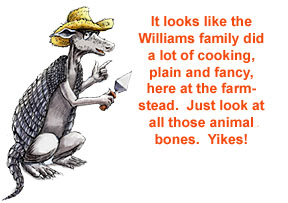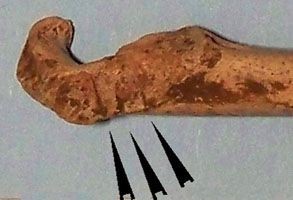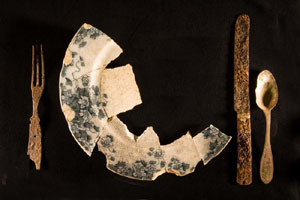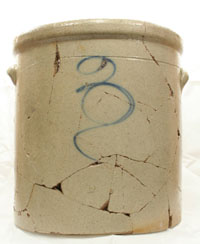
Archeologists learned a lot about what the Williams family ate, how they stored and cooked their food, and how they served it. The team found fragments of the Williams' dishes, utensils, crocks, and pots used for storing food, cooking, and serving meals. They even uncovered the remains of some of the meals at the Williams farmstead, including the bones of pigs, cows, chickens, rabbits, and birds. Some of the bones had distinctive cutting, chopping, and sawing marks made by knives or other metal tools during butchering or before cooking.
Even though they raised animals for food, Ransom Williams and his sons also added to their family’s food supply by hunting. They probably supplied the family dinner table with rabbit, squirrel, possum, and turkey from the woods on their property, as well as doves and quail. Based on plant remains found at the site, the Williams girls may have gathered wild plants, such as onions, walnuts, and dewberries, and also served corn, sweet potatoes, and peaches from the garden at mealtimes.Recipe for Rabbit Stew
Rabbit meat, cut into pieces (2 good-sized rabbits)
3 chopped onions
6 chopped potatoes
A large bunch of greens (wild or home-grown)
6 chopped carrots
Sprigs of herbs
Salt
Lard or other grease
Water






 A variety of spoons, forks and knives were found at the Williams’ site. This bone-handled knife was probably considered a fine piece of cutlery. Notice the fancy detail in the metal strips that hold the blade to the bone handle.
A variety of spoons, forks and knives were found at the Williams’ site. This bone-handled knife was probably considered a fine piece of cutlery. Notice the fancy detail in the metal strips that hold the blade to the bone handle.

